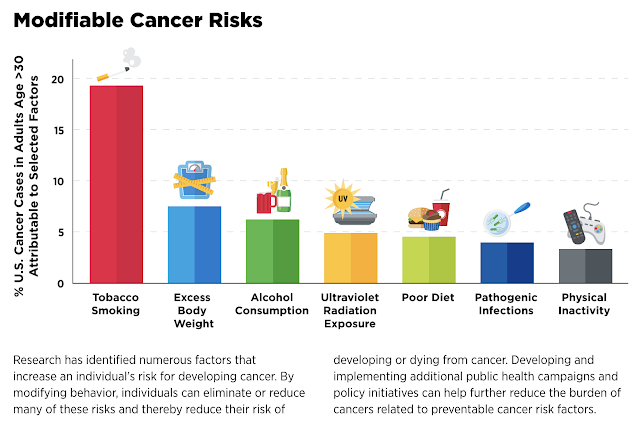In an era of quiet glow-ups, no-prep veneers are the new 'it' cosmetic procedure

- No-prep veneers are gaining popularity as a less invasive cosmetic dental option.
- Traditional veneers require tooth shaving, leading to long-term damage concerns.
- No-prep veneers can be costlier but align with the trend of subtle cosmetic enhancements.
For decades, celebrities, influencers, and high-fliers have relied on a technique to give them perfect smiles: veneers.
Now, "no-prep veneers" are becoming the new "it" procedure. The result is similar to traditional veneers, but there's no filing, drilling, or grinding involved to make room for the porcelain shells.
It's all part of the "quiet glow-up" trend. Forget Botox; people want microtox. Instead of face and neck lifts, cosmetic surgeons are fielding requests for biostimulators and skin boosters.
Proponents include Bryan Johnson, the famed longevity seeker, who has talked about getting no-prep veneers to improve the whiteness of his teeth without shaving them down.
"Many young people see videos of people sharing their shaved-down teeth, and they are being educated about the high risk" of long-term damage, Dr. Lilya Horowitz, a cosmetic and general dentist and the owner of Domino Dental, told Business Insider.
Horowitz said she's seen an uptick in people coming into her Brooklyn clinic for "low-risk" cosmetic tweaks like no-prep veneers to revamp broken, chipped, cracked, or discolored teeth.
"The more you know about the risks of cutting your teeth down, the more you will be motivated to seek more conservative options," she said.
No-prep veneers are not for everyone. People with larger teeth or more severely discolored teeth may fare better with traditional veneers. Plus, they're no cheaper — in fact, they're often more expensive. Still, in this era of subtle "tweakments," they're emerging as the go-to job in cosmetic dentistry.
Skip the drilling
Both traditional and no-prep veneers start the same way: After a good cleaning and polishing, your dentist will take 3D scans of your teeth, dental radiographs, and high-res photos to create a prototype of your veneers.
If you're getting no-preps, the prototype will be placed on your teeth for an idea of the color, size, and new shape to ensure you're happy with the look.
If you're getting traditional veneers, the dentist will drill down your teeth before placing the prototype to make sure they fit.
The lab then starts the fabrication process for your custom porcelain veneers, which takes about two weeks. The material of choice for both is porcelain, but a much thinner porcelain is used for no-prep veneers.
Once they're produced, the veneers are ready to be placed on your teeth for your final approval.
Your dentist will perform a sterilization protocol before the bonding process to remove any plaque and bacteria before the veneers are bonded onto your teeth with resin cement.
How we fell out of love with traditional veneers
The widespread use of porcelain veneers to cover up dental imperfections began in the early 1980s and went mainstream a decade or so later.
"I think we really started seeing them gain popularity, or, in the very least, the general public becoming more aware of them, in the late 1990s when many actors and actresses in Hollywood were opting for large, white, more obvious veneers," Dr. Jon Marashi, a Los Angeles-based cosmetic dentist whose clients include Ryan Seacrest, Kate Hudson, and Ben Affleck, told BI.
When veneers first emerged, the procedure was less invasive, since the material of choice — feldspathic porcelain — was very thin and could fit neatly on most teeth.
Since the early 2000s, stronger materials have emerged that are better at covering up imperfections.
Those materials, such as zirconia or lithium disilicate, are now the standard. They're up to 50% thicker, making them less fragile and easier to work with for both veneers (covering the front of the tooth) and crowns (wrapping around the whole tooth).
That thickness also requires more room. Dentists should only shave off 0.5 millimeters per tooth at most, but the thick material can cover up imprecision.
Some practitioners "excessively drill a tooth down to a tiny nub" to speed up the job, Marashi said. "Unfortunately, over the years, there has been a tendency for the tooth to be excessively drilled, and I think that's why we're seeing the pendulum shift toward the no-drill option."
Teeth aren't like hair or skin; enamel doesn't grow back, which means changes to teeth that are necessary for traditional veneers are permanent.
That's a bitter pill for Rebecca Bacon, a 32-year-old speech-language pathologist who got traditional veneers in 2009 when she was 16. In high school, she was self-conscious about two of her teeth that grew smaller than average. Eventually, her parents and dentist agreed on a solution: Her teeth were shaved down and covered with perfect porcelain shells.
For a while, her new pearly whites were excellent. But cracks started to show — literally — no matter how carefully she chewed her food. "My veneers aren't great," Bacon told BI. "One has slipped and shows a sliver of tooth at the top and the other cracked and needed to be fixed. They were supposed to last 20 years! I hate that I still can't bite into apples."
She wonders if this would be easier to fix if she'd had the option of no-preps.
Patients are gravitating toward no-prep for their smile makeovers
In a way, no-preps are like retro veneers, using the same feldspathic porcelain as they did in the '80s.
But because dentists have been using veneers for years and the technology has improved, the results are usually more natural-looking.
If you're deciding between the no-prep and standard veneers, the first step is to discuss your goals for improving your smiles with a dental professional.
With no-prep veneers, "the original tooth remains entirely intact," Marashi said. That means your teeth should be good for the long haul. "If you decide to remove veneers later on, a laser can be used to remove the veneers and return the tooth to its original state."
However, your dentist will determine whether no-prep veneers are an option for you.
You may want to rethink no-prep if your goal is to significantly alter the color of your teeth.
"Patients with discolored front teeth that want a dramatic color change would also not be good candidate for this since no-prep veneers are very thin," Horowitz said. "Traditional veneers are able to hide more imperfections in teeth."
Plus, if you have excessively crowded or large teeth, you will probably need a bit of drilling.
The deciding factor is how far out past the lip your teeth are. "Usually, if teeth are behind the wet/dry border of your lower lip, there is some room to build out. Building teeth out past that border is not recommended," Horowitz added.
No-prep does not necessarily mean a discounted price — some dental practices charge upward of $3,500 per tooth for no-preps, which is more than some charge for traditional veneers.
"The reason for this is the sensitivity of the technique," Horowitz said. "It takes a lot more skills to remove very little or no tooth structure and create a beautiful result instead of drilling down the teeth and having a lot of room to work with."
Traditional veneers, on the other hand, can be faster because "it does not require as much time to over-drill a tooth compared to a delicate and conservative tooth preparation," Marashi said.
Take care of your pearly whites!
Keep in mind that while veneers are made to last, the length of their lifespan depends on the skillset and execution of the dentist who applies them and post-treatment patient care.
"General studies have shown a 95% survival rate of porcelain veneers over a 10-year period," Horowitz said. "If well taken care of and bonded well to enamel, they can last multiple decades."
As long as your veneers are properly bonded, there should be no risk of plaque build-up or bacteria leakage beneath them, either.
Still, all veneers — like teeth — need TLC. That means brushing, flossing, and keeping up with regular cleanings as you always did with your teeth.
Source: businessinsider.com/no-prep-veneers-new-trend-in-cosmetic-dentistry-2025-4
Read More: Dental series



.png)
.png)

.png)

Comments
Post a Comment